An "Eastern" Approach to Things (in this case furniture design and joinery)
A thread in the Messages Forum of WoodCentral.com started by Bill Tindall "A case against flauntable dovetails-editorial" got me thinking about furniture joinery - and how cultural differences show up - even in furniture - and how it's designed and made. In the course of putting together this stuff I've begun to understand better why "western nations" have so much trouble understanding "eastern nations" and visa versa - but that's a whole 'nother story . . .
Chinese traditional furniture makers have a different approach to furniture making than "western" furniture makers.What follows is the examination of a Chinese version of the familiar "western" Sideboard. It has the functions of a sideboard - drawers above for napkins, placemats and silverware, cabinet doors below for "silver sets" and table clothes, perhaps candle stick holders or candelabras and so forth - there are subtle but significant differences in how it looks and how it is put together.
While the form and function look familiar, the construction, on close examination definitely isn't, and the apparent size of the parts is misleading when you start really exploring the details. This piece illustrates some key differences between "East" and "West" approaches to things, the former tending towards Evocative (Here look. What do YOU see?), the latter more proned to be Provacative ( Here, I want YOU to see THIS)

Look at this detail of the right end of the piece. Notice that all the joined corners are mitered - no butt joints, no simple mortise and tenons or cope and stick. Look at the drawers and doors - cock beading around them - or at least that's what it looks like at a glance. And the front leg and the apron seem kind of thin, especially the apron - given the length of this piece which is six feet.
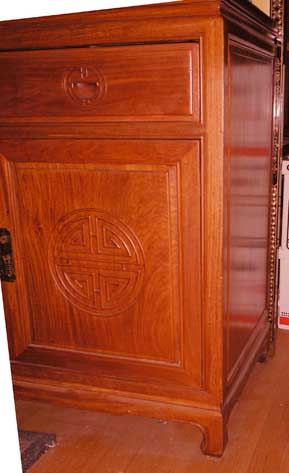
But look more closely. Notice that the drawer's cock beading is actually part of, rather than an add on trim, of the apron and leg.
Notice the triple mitered corner - with what appears to be added on cove molding on top of the apron. Look closer and you see that the cove molding is actually not an add on but an integral part of the apron. The apron is TWICE as tall as you initially thought it was - strength but with the illusion of thinner, more delicate parts,
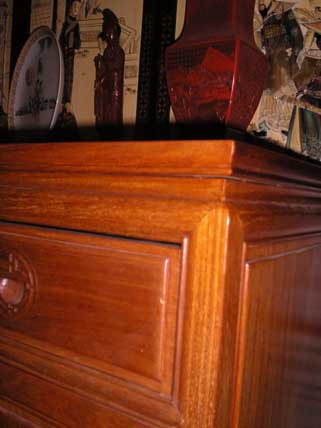
Let's look at a drawing of this area, with a cross section to show what's REALLY there, as opposed what you might THINK is there. Through the use of edge treatments the look of the parts is broken up into smaller, more delicate, lighter looking, areas, with very few flat surfaces.
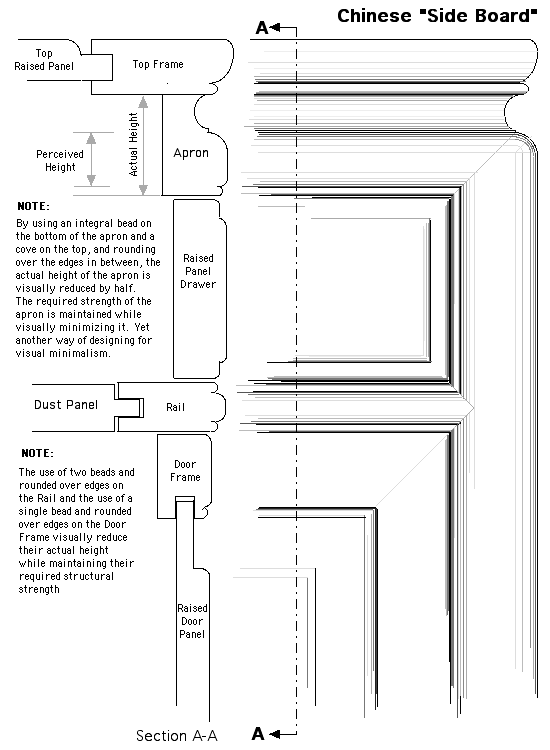
Now let's get to some details - the apron & leg.
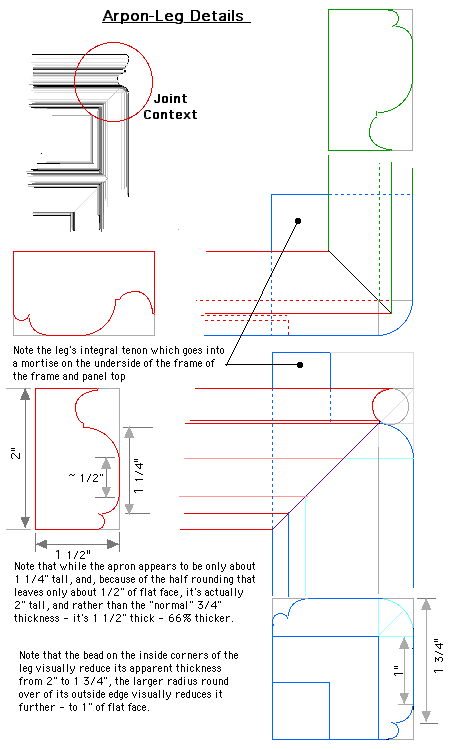
You've notice that all the corners are mitered to minimize exposing end grain to view and that there is no visible hint as to the joinery. And here's where it gets tricky because I'm only guessing from here on, though I have studied up a little on Chinese joinery in Ecke's book on Chinese Furniture and a bit of web surfing looking for info on this subject.. While "western" joinery is somewhat simpler, Chinese joinery has the same functionality though it is a bit more complex - the apron/leg triple miter with integral mortises and tenons in this case.
So here's what I THINK the apron/leg joinery looks like - and the basics of how the parts were made.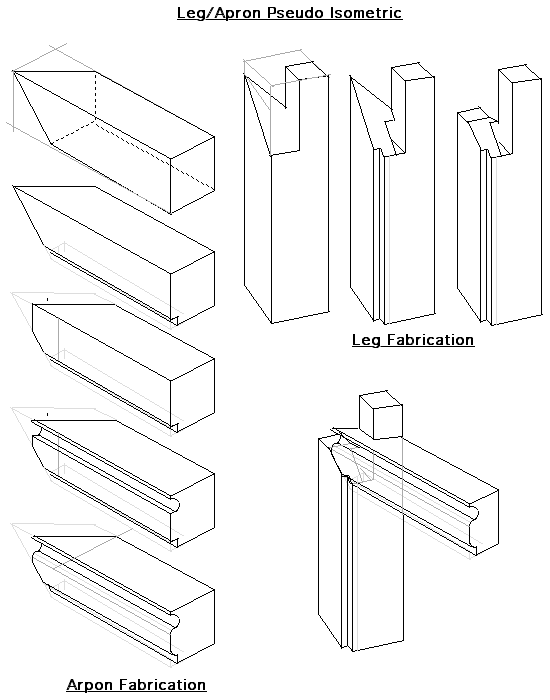
I'd done the following illustration while studying another piece. While not exactly the same as the triple miter joint in this sideboard, it does illustrate the basics of the joinery and how it can be made - in this case just the leg joinery.
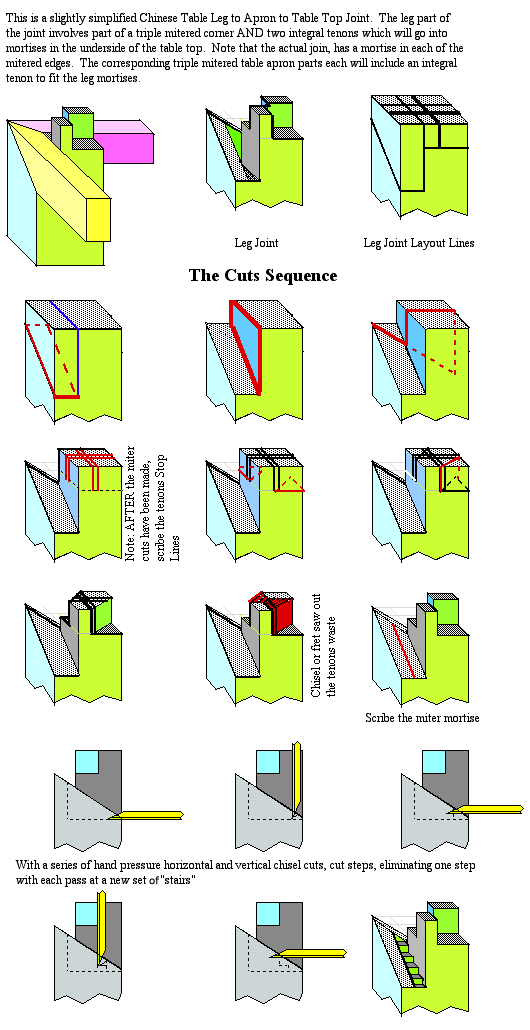
By now you can see some of the differences between "western" and "eastern" (Chinese) approaches to furniture design (appear to be lighter and more delicate by using subtle edge treatments - have everything "flow together" by using miter joints where ever possible - and hide ALL the joinery). Greene & Greene furniture design and joinery are examples of the "western" approach to design - more massive in appearance and emphasizing the somewhat simple by comparison joinery as "design elements".